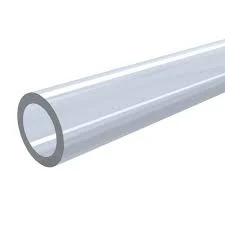11-р сар . 08, 2024 18:24 Back to list
pvc pipe coupling
Understanding PVC Pipe Couplings A Comprehensive Guide
Polyvinyl chloride (PVC) is one of the most widely used materials in plumbing, construction, and various industrial applications due to its durability, versatility, and cost-effectiveness. Among the essential components in any PVC piping system are couplings. This article will explore PVC pipe couplings—what they are, their types, applications, installation processes, and benefits.
What Are PVC Pipe Couplings?
PVC pipe couplings are fittings that facilitate the connection of two pieces of PVC pipe. They serve as a critical link in plumbing systems, allowing for the extension of pipelines, repair of broken pipes, or the alteration of pipeline direction. Couplings can also play a crucial role in transitioning between different pipe materials.
Types of PVC Couplings
There are several types of PVC couplings, each designed for specific applications
1. Standard Couplings These are the most common type, used to join two sections of pipe of the same diameter. They are straightforward and provide a strong, leak-proof connection.
2. Reducing Couplings This type is utilized when connecting pipes of different diameters. For instance, a larger pipe can be connected to a smaller one, allowing for efficient flow management.
3. Slip Couplings Slip couplings do not have any protruding ends, allowing them to be slid over pipes for quick and easy installation. They are particularly useful for repairing sections of damaged pipe.
4. Flexible Couplings Made with rubber and stainless steel bands, these couplings can accommodate slight misalignments in pipes. They are often used in situations where movement or vibration might occur, such as in sewer systems.
5. Cap Couplings These cap-like fittings are used to seal the end of a pipe, terminating the flow within a section of the pipeline.
6. Tee Couplings Tee couplings allow for branching off from a main pipeline. They have three openings one for the main pipe and two for lateral connections.
Applications of PVC Couplings
PVC couplings find applications across various sectors, including
- Residential Plumbing Used extensively in water supply lines and drainage systems, PVC couplings ensure a secure and efficient way to connect pipes. - Irrigation Systems In agricultural practices, PVC couplings are vital in connecting irrigation lines to deliver water effectively to crops while minimizing leaks.
- Industrial Uses Various industries utilize PVC pipes and couplings for transporting chemicals, air, and other substances due to their corrosion resistance and chemical durability.
pvc pipe coupling

- HVAC Systems PVC couplings are also employed in heating, ventilation, and air conditioning systems, helping to connect ductwork and ensuring airflow efficiency.
Installation Process
Installing PVC pipe couplings is a relatively straightforward process, particularly for DIY enthusiasts. Here are the general steps
1. Preparation Start by measuring and cutting the PVC pipes to the desired lengths. Use a PVC cutter or a saw to ensure clean cuts.
2. Deburring Remove any burrs or rough edges from the cut ends of the pipes. This step is crucial for ensuring a tight fit.
3. Cleaning Clean the ends of the pipes and the inside of the coupling with PVC pipe cleaner. This step removes any dirt or grease that could hinder the adhesive bond.
4. Applying Adhesive Apply PVC cement to both the pipe ends and the inside of the coupling. A consistent, even coat ensures a strong bond.
5. Joining Quickly push the pipe ends into the coupling. Twist slightly to ensure an even distribution of adhesive.
6. Curing Allow the joint to cure as per the manufacturer’s instructions. Typically, it requires at least a few hours before pressure testing.
Benefits of PVC Pipe Couplings
PVC pipe couplings offer numerous advantages
- Durability PVC is resistant to corrosion, impact, and environmental factors, ensuring longevity in various applications.
- Cost-Effectiveness Compared to other materials, PVC is inexpensive, making it a budget-friendly option for plumbing and construction.
- Low Maintenance PVC systems require minimal maintenance, further reducing long-term costs.
- Ease of Installation The installation process for PVC couplings is relatively simple, allowing for quick repairs and modifications.
In conclusion, PVC pipe couplings are indispensable elements of plumbing and piping systems, offering ease of use, reliability, and versatility in applications. By understanding their types, applications, and benefits, users can make informed choices in their plumbing projects and ensure robust pipeline integrity.
-
Durable PP Rigid Sheet: Lightweight, Chemical Resistant Solutions
NewsAug.21,2025
-
PVC Grey Sheet for Extraction: Chemical Resistant & Durable
NewsAug.19,2025
-
Durable PVC Pipe Fittings for Plumbing & Irrigation Needs
NewsAug.18,2025
-
HDPE Steel Belt Reinforced Spiral Corrugated Pipe | High Strength
NewsAug.17,2025
-
HDPE Pipe Fittings: Durable, Leak-Proof Solutions
NewsAug.16,2025
-
Premium CPVC Sheet: High-Temp & Chemical Resistant Solutions
NewsAug.15,2025

